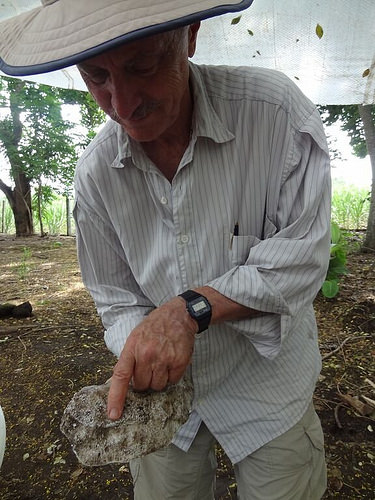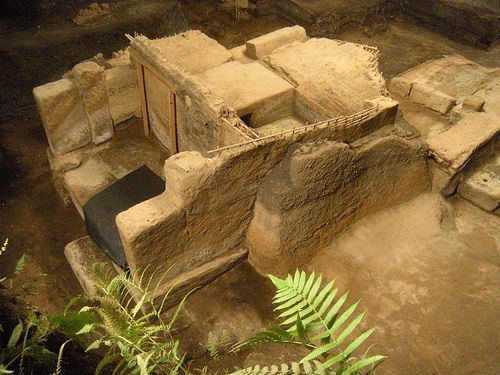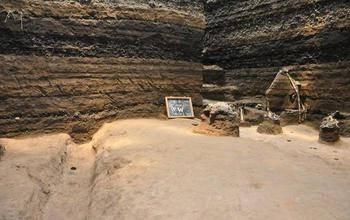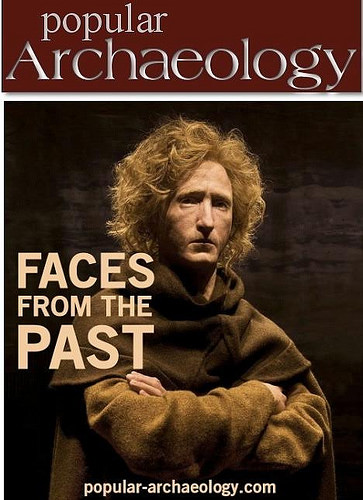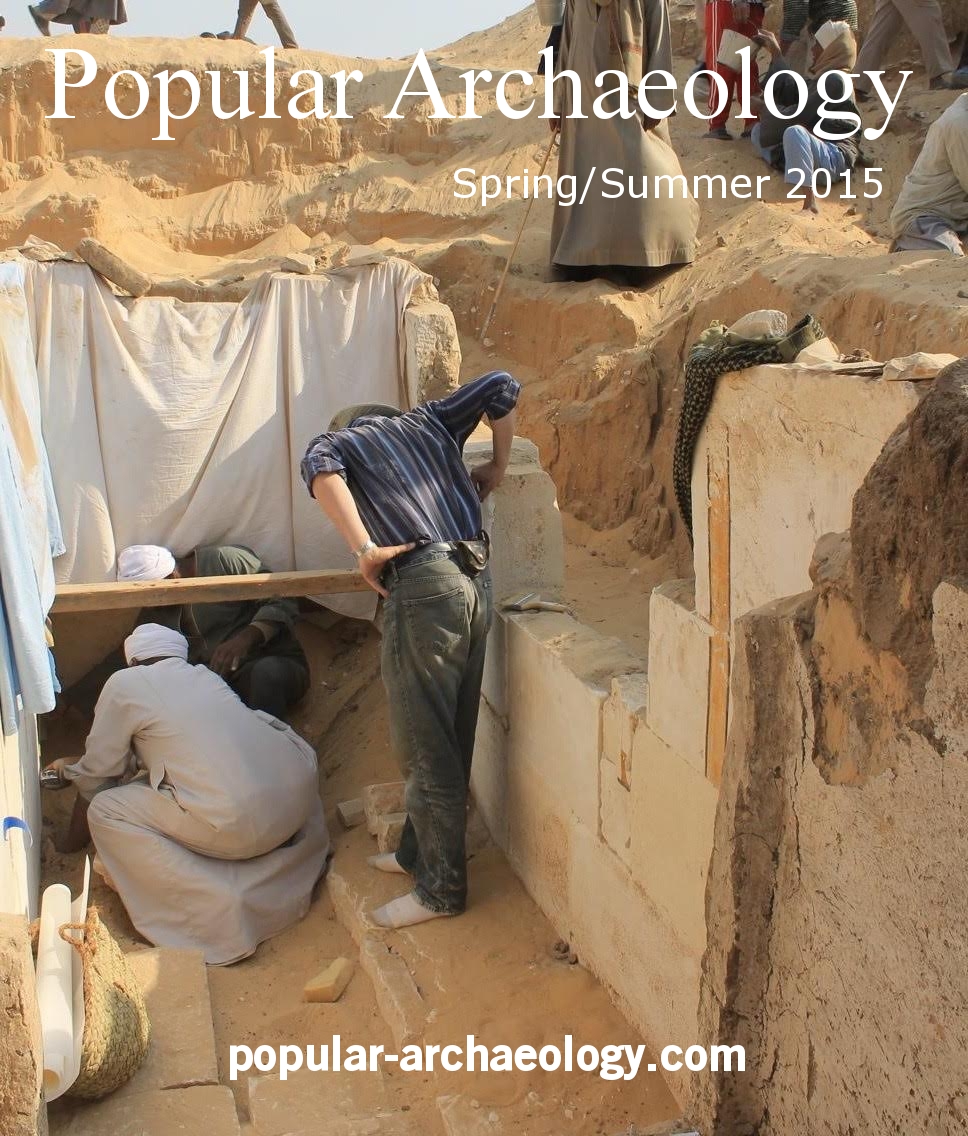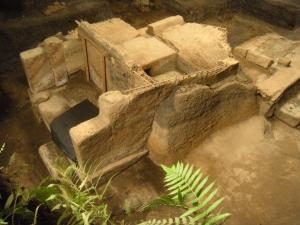
University of Colorado, Boulder and National Science Foundation—Continuing research at a Maya village in El Salvador—frozen in time by a blanket of volcanic ash from 1,400 years ago—shows farming families who lived there went about their daily lives with virtually no strong-arming by the elite royalty lording over the valley.
Instead, archaeological evidence indicates significant interactions at the village of Ceren took place among families, village elders, craftspeople and specialty maintenance workers. This research comes from a new University of Colorado Boulder (CU-Boulder) study, funded by the National Science Foundation (NSF).
Ceren is the best-preserved ancient Maya village in all of Latin America. In A.D. 660, the village was blasted by toxic gas, pummeled by lava bombs and then choked by a 17-foot layer of ash falling over several days after the Loma Caldera volcano, less than half a mile away, erupted.
Discovered in 1978 by CU-Boulder anthropology Professor Payson Sheets, Ceren has been called the “New World Pompeii.” The degree of preservation is so great researchers can see marks of finger swipes in ceramic bowls, and human footprints in gardens that host ghostly ash casts of corn stalks. Researchers have also uncovered thatched roofs, woven blankets and bean-filled pots.
Some Maya archaeological records document “top-down” societies, where the elite class made most political and economic decisions, at times exacting tribute or labor from villages, said Sheets. But at Ceren, the villagers appear to have had free reign regarding their architecture, crop choices, religious activities and economics.
“This is the first clear window anyone has had on the daily activities and the quality of life of Maya commoners back then,” said Sheets, who is directing the excavation. “At Ceren we found virtually no influence and certainly no control by the elites.”
A paper on the subject appears in the current issue of Latin American Antiquity published by the Society for American Archaeology. The 10-acre Ceren research area was declared a UNESCO World Heritage Site in 1993.
Ceren is believed to have been home to about 200 people. Researchers have excavated 12 buildings, including living quarters, storehouses, workshops, kitchens, religious buildings and a community sauna. There are dozens of unexcavated structures, and perhaps even another settlement or two under the Loma Caldera volcanic ash, which covers an area of roughly two square miles, Sheets said. Thus far, no bodies have been found, an indication a precursor earthquake may have given residents a running start just before the eruption.
The only relationship Ceren commoners had with Maya elite was indirect, through public marketplace transactions in El Salvador’s Zapotitan Valley. There, Ceren farmers likely swapped surplus crops or crafts for coveted specialty items like jade axes, obsidian knives and colorfully decorated polychrome pots, all of which elites arranged to have brought to market from a distance. Virtually every Ceren household had a jade axe–which is harder than steel–used for tree cutting, building and woodworking.
“The Ceren people could have chosen to do business at about a dozen different marketplaces in the region,” said Sheets. “If they thought the elites were charging too much at one marketplace, they were free to vote with their feet and go to another.”
________________________________________
Professor Payson Sheets points to the imprint of several toes from a footprint left on the Ceren sacbe. Footprints pointed away from the village and may have been made by Mayans fleeing the volcanic eruption. Credit Rachel Egan, University of Colorado.
____________________________________________
One of the excavated community buildings has two large benches in the front room, which Sheets believes were used by village elders when making decisions. One decision would have involved organizing the annual crop harvest festival, a celebratory eating and drinking ritual that appears to have been underway at Ceren when the Loma Caldera volcano abruptly blew just north of the village, said Sheets.
He believes the villagers fled south, perhaps along a white road leading away from the village discovered under 15 feet of ash in 2011. The elevated road, known as a sacbe (SOCK-bay), is about 2 meters wide and made from white tightly packed volcanic ash, with drainage ditches along each edge. The sacbe appears to split in the village and lead toward the plaza and two religious structures: the large ceremonial building and a second, smaller structure used by a female shaman.
____________________________________________
Structures at Ceren were buried in up to 17 feet of ash over a period of several days, freezing the 1,400-year-old village in time. Credit: University of Colorado
______________________________________________________
Unique research
“There are two aspects that make this project unique,” said John Yellen, NSF program manager for the Ceren excavations. “The first is the incredible degree of preservation at Ceren, which captures in such detail a moment in time. The second is the perseverance and ingenuity of Dr. Sheets, who devised effective techniques to address a broad range of questions involving Ceren’s agricultural practices and its social organization.”
Prior to the discovery of Ceren’s sacbe, such “white way” roads—which often connected temples, plazas and towns and had strong practical, political and spiritual connotations—were known only from Mexico’s Yucatan Peninsula and all were lined on each side with paving stones, unlike the Ceren sacbe, said Sheets. (A portion is pictured above right, buried under about 16 feet of ash. The trench on the left side was a drainage canal to catch excess rainwater).
Measurements with an instrument known as a penetrometer indicated the sacbe was extraordinarily hard. This was, in part, because villagers must have vigorously pounded sections of the sacbe with heavy objects over a period of days, he said. In addition, tiny, angular grains of the ash, or tephra used to build the sacbe lock together in a tight matrix when packed down under moist conditions. The center of the sacbe was slightly grooved, an indication people walked single file as they headed to their crop fields or perhaps traveled to and from the nearby town of San Andres.
“The western canal of the sacbe was crisp and well formed and had apparently been worked on just days before the eruption,” said Sheets. “But it looks like the workers hadn’t gotten around to maintaining the eastern canal before the volcanic event.”
The team, which has dug 10 test pits so far in an attempt to trace the path of the sacbe from Ceren south, found several dozen footprints on its outer, softer edges. “More than half of the footprints were headed south away from the village, away from the danger,” Sheets said. “I think at least some of them were left by people fleeing the eruption.”
Who built and maintained the sacbe—now known to stretch at least 150 meters from the village and may well go all the way to San Andres—is still a mystery. “We think the work was done on the household level with multiple families involved, perhaps supervised by village elders,” said Sheets.
There also is evidence that residents of particular households at Ceren were responsible for the upkeep of certain community structures, said Sheets. One household, for example, contained an inordinate amount of pots and firewood that the researchers speculated were used during activities in the domed community sauna building. That sweat bath, which could comfortably seat about a dozen people, had a central firebox where water was poured to create the desired steam and heat, Sheets said.
In 2009, Sheets and his team discovered intensively cultivated manioc (cassava) fields at Ceren. It was the first and only evidence of intense manioc cultivation at any New World archaeology site. Sheets and others believe such large manioc crops could have played a vital role in feeding indigenous societies living throughout tropical Latin America. Today, dried manioc powder is used in the region to make tortillas and tamales, and fermented manioc is used to make alcoholic beverages.
_______________________________________________________
Co-authors on the new study included doctoral students Rachel Egan and Alexandria Halmbalcher of CU-Boulder, former CU-Boulder doctoral student Christine Dixon (now a faculty member at Green River College in Auburn, Washington); professor David Lentz and doctoral student Venecia Slotten from the University of Cincinnati; Rocio Herrera of National Museum of Anthropology in San Salvador; and doctoral student Celine Lamb of the University of Kentucky.
CU-Boulder undergraduates and graduate students have been involved in all aspects of the Ceren excavation, which likely will continue for decades. The first vestiges of the site were inadvertently uncovered in 1976 by a bulldozer, leveling ground for a government agricultural project. Sheets began research on the site two years later after radiocarbon dates led him to conclude the buried village was ancient.
In addition to NSF, Sheets and his colleagues have collaborated with the National Geographic Society, the Smithsonian Institution, the Getty Conservation Institute and a number of universities.
Source: National Science Foundation and University of Colorado, Boulder. All images courtesy University of Colorado.
_______________________________________________________
In addition, the latest Popular Archaeology ebook is now available.
______________________________________________
Travel and learn with Far Horizons.
____________________________________________
This richly illustrated issue includes the following stories: Two remarkable discoveries that are shedding light on human beginnings in Africa; a traveling exhibit and an archaeological site that show how knowledge is more valuable than gold; a Spanish cave and a unique burial that are offering a tantalizing glimpse on the lives of Ice Age hunter-gatherers in Europe; the stunning visual reconstruction of an ancient Roman town; enlightening new finds at a remarkably well-preserved site of ancient Hellenistic-Roman culture overlooking the Sea of Galilee; rare finds that are shedding light on occult practices among ancient Greeks in Sicily; and an overview of the overwhelmingly rich archaeological heritage of Britain. Find it on Amazon.com.

